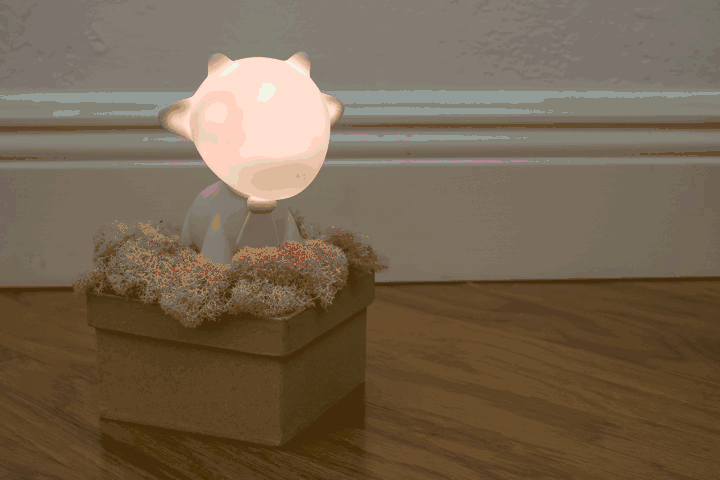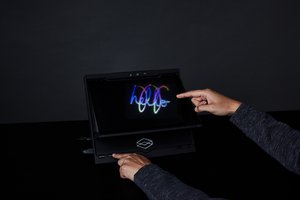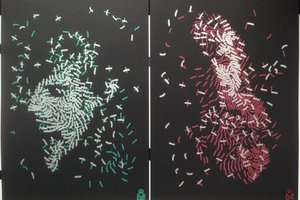Background
The KidRobot Munny is a do-it-yourself vinyl figurine for making one of a kind art toys. Most of the time, people color them with markers or paint. Sometimes they augment the figures with polymer clay, building ears, tails, and weapons. But most of these customizations have been along the same lines—making a figurine that sits on a shelf—impressive though they may be.

But, as an engineer, I thought "how can I make these interactive?"
Meanwhile, I read that some scientists believe that pigeons may see magnetic fields, possibly overlaid in their visual field. One theory is that a light-sensitive protein, called cryptochrome, found in the retinas of many animals is actually responsive to magnetic fields. Interestingly, it takes extremely strong magnetic fields to affect change in a "normal" chemical reaction (fields much stronger than that of the Earth). However, there is the case of something called a radical pair wherein the fates of two electrons are entangled (yes, we're talking about quantum mechanics here), resulting in magnetic field-dependent outcomes of reactions with these radical pairs.
That lead to some daydreaming on my part about how that would work for a human. In the case of birds, though no one has been able to see it for themselves yet, we have an idea of how the magnetic field might look.
Lastly, at more or less the same time, it occurred to me that hue in the HSL (hue, saturation, and level) color model, represented as an angle, is analogous to compass heading which is also represented as an angle. Why not display heading as a color on the color wheel?
On a more conceptual level, I've been interested for some time in using our existing senses at the edge of conscious awareness such that they provide a new form sensory perception. In other words, though the device described in this paper uses one's sense of sight, the user really gets an extra sense. The important part is that when we use an existing sense but become unaware of it (that is, at the edge of conscious awareness or beyond), we basically earn a new sense. In a way, this is not really a new concept—we've grown used to watches providing us with a more precise sense of time than we have biologically. As technology makes seamless human-machine interface easier and less expensive, we can expect these kinds of extrasensory perception to become more like senses and less like carrying a gadget around and looking at it from time to time.
Implementation
Those of us that use computers for drawing likely know that colors can be represented in quite a few ways from a mix of red, green, and blue to an angle around the color wheel. The latter, often referred to as HSV (hue, saturation, and value) or HSL (hue, saturation, and luminance or level) represents colors as polar coordinates in a three-dimensional space. But if you just look at it in one plane, from above, you see the same old color wheel from elementary school art class, with red on top, or zero degrees; green on the lower right, or 120 degrees; blue on the lower left, or 240 degrees; and blending back to red again on top at 360 degrees. (For the pickier, more technically minded of you out there, you might know that the artists’ color wheel and the HSV color wheel are different, but for the purposes of this project those differences are small enough as to be irrelevant.)
Now, if you’ve ever watched a movie where pilots or ship captains bark out headings, you will have noted that they issue commands in degrees around the compass rose, where zero degrees is north, ninety degrees is east, 180 degrees is south, and so on.
Why not, then, make a color compass? If you’ve been maintaining mental images of the last two paragraphs, and can lay them on top of each other, you’ll see that red is north, yellow-green is east, aqua is south, indigo is west, easing through violet as we get back to north.
Note that in mathematics and engineering, angles...
Read more » Andy Oliver
Andy Oliver



 Laura
Laura
 Christian Walther
Christian Walther